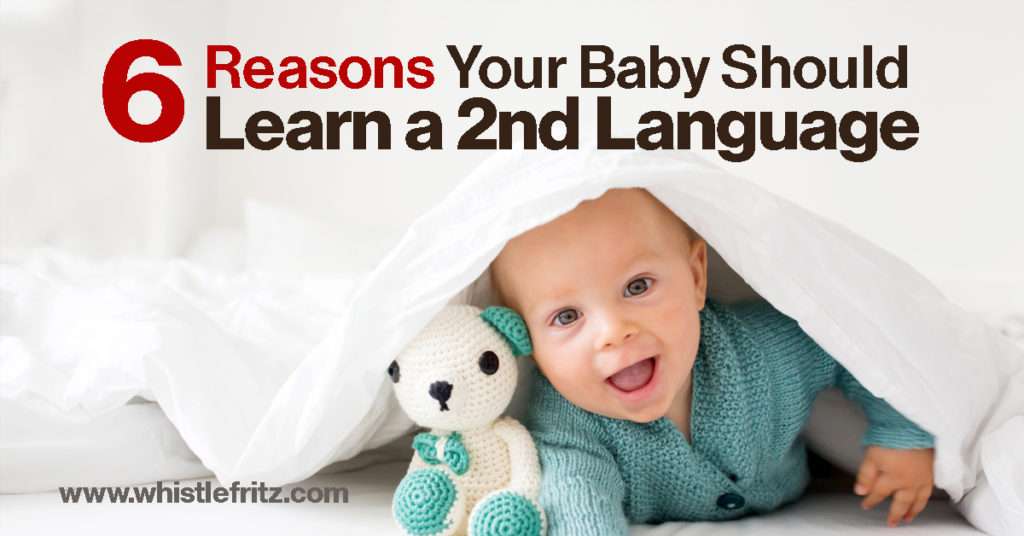Blog
When is the best time to start exposing children to a second language?
by Heidi Stock
When is the best time to start exposing children to a second language?
As early as possible! In fact, babies benefit from hearing a second language as early as during pregnancy. Here’s the evidence:
1. Babies recognize the differences between languages within hours after birth!
Research shows that babies learn the rhythm and intonation of the language or languages that their mother speaks while pregnant. Amazingly, babies can distinguish their mother’s language from other languages within hours after birth. In other words, the process of learning a language starts early! That is the conclusion of studies conducted by internationally-recognized researcher, Dr. Janet Werker, and her team at the University of British Columbia. For insights into the methodology and findings of Dr. Werker’s lab – and the bonus of adorable baby videos – watch this video.
2. Babies can hear all human language sounds at birth, but lose this ability over time
According to Dr. Naja Ferian Ramirez, a research scientist at the University of Washington’s Institute for Learning and Brain Sciences, a baby’s brain has an amazing ability: it can hear all 800 sounds – 600 consonants and 200 vowels – that make up all the world’s languages combined. These distinct sounds, called phonemes, distinguish one language from another. At birth, babies can hear all 800 sounds. But gradually, babies lose the ability to hear the sounds that they are not exposed to. Being able to hear a language’s unique sounds is likely one of the reasons that children, unlike adults, can learn to speak a second language without an accent.
3. Babies’ brains are primed for language learning
According to Dr. Patricia Kuhl, a research scientist and Co-Director of the Institute for Learning and Brain Sciences at the University of Washington: “Science indicates that babies’ brains are the best learning machines ever created, and that infants’ learning is time-sensitive. Their brains will never be better at learning a second language than they are between 0 and 3 years of age.” In fact, research shows that babies as young as 20 months old can learn two languages simultaneously without confusion or delay. According to prominent language-acquisition researcher Dr. Janet Werker: “There is absolutely no evidence that bilingual acquisition leads to confusion, and there is no evidence that bilingual acquisition leads to delay.”
4. Exposing babies to a language helps them develop “phonological awareness”
“Babies first start learning language by listening not to individual words, but to the rhythm and intonation of the speech stream — that is, the changes between high and low pitch, and the rhythm and loudness of syllables in speech.”
Phonological awareness is the skill of recognizing the sounds and rhythm of a language. Babies start developing this skill before they start learning words. As adults, we can see the space between words as we read, and might think of words as being the most basic building blocks of language. But, there are smaller, even more fundamental, building blocks of language: sounds (or phonemes). As babies develop the skill of phonological awareness, they start to break down the flow of language around them into smaller “units” of language, such as sounds and syllables; they also recognize the “rhythm” of the language. With time, they begin to hear the interplay between sounds, for example, in rhymes (“cat” and “hat”), and alliteration (“bouncy baby”), and eventually they develop the ability to play with those sounds.
Here are 2 fun videos that illustrate phonological awareness of a language. In both videos, there is a speaker who isn’t speaking real words, but is approximating the sound and rhythm of the language.
-
- This viral video of the toddler and dad discussing the season finale of the show “Empire.”
- A video of legendary comedian Sid Caesar faking four languages.
5. Exposing babies to a language helps them learn that language later in life
“The earliest traces of a language can stay with us into adulthood, even if we no longer speak or understand the language itself.”
Learning Language
To learn a language, kids need to hear the rhythm of words spoken together naturally. That’s why Whistlefritz’s Spanish and French videos for kids have skits and games where words are spoken in sentences not just single words appearing as “video flashcards” on a screen.
Simply being exposed to the sounds of a language – even if a child doesn’t speak it – provides advantages for learning the language later in life. In one study, Korean infants younger than 6 months were exposed to a language before they had started talking. The infants were adopted, and didn’t hear the language again until they were adults. Despite the passage of time, the infants still had advantages re-learning the language as adults. Why? The study’s authors concluded that the infants’ early exposure to Korean let them develop phonological awareness of the language. As the study’s lead author, Dr. Jiyoun Choi, put it: “Language learning can be retained subconsciously, even if conscious memories of the language do not exist.”
6. Exposing babies to a second language enables them to adapt better to change
Research indicates that babies raised in bilingual homes are better at flexible thinking. In one study, babies who were raised in monolingual homes and bilingual homes participated in a test. The babies were taught that when they heard a sound, a puppet would appear on one side of a screen. Halfway through the study, the puppet started appearing on the other side of the screen. Only the babies raised in bilingual homes were able to adapt successfully to the change and look for the puppet on the correct side of the screen.
Heidi Stock is the founder of Whistlefritz and an un-credentialied nobody in the field of language acquisition research.


